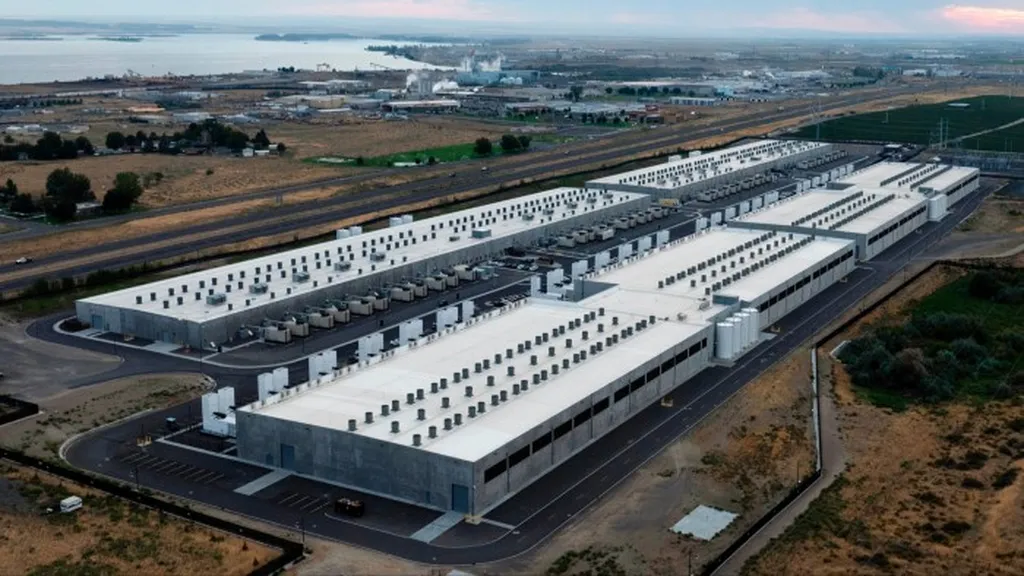Data centers are rethinking their approach to power generation, with backup generators stepping into the spotlight. Traditionally, these generators have been a rarely used part of the infrastructure, kicking in only when other power sources fail. But a chronic shortage of available power across North America is changing that. Data center developers, frustrated by long lead times from utilities, gas turbine OEMs, and new nuclear generation suppliers, are turning to natural gas generators to meet the growing demand for high-reliability, always-on power, particularly for AI workloads.
Take the case of the massive data center campus being developed in Millard County, Utah. Joule Capital Partners, Caterpillar, and CAT dealer Wheeler Machinery are collaborating on a project that could eventually add up to 4 GW of power. At its heart will be a fleet of Caterpillar G3520K generator sets and more than 1 GWh of battery storage. These engines, running on natural gas, will be used for prime power. Each one has an engine speed of 1,500 RPM and a power output of 2.5 MW. The system produces electricity and captures waste heat to power and cool high-density AI servers.
“The full generation package can be delivered ahead of most other generation technologies,” said Melissa Busen, senior vice president of Electric Power at Caterpillar. “This speed-to-power advantage is critical for meeting the explosive growth in demand for compute capacity.”
This shift is happening against the backdrop of a data center construction boom. Massive complexes are springing up all over North America to support AI. According to consulting firm DC Byte, colocation providers and hyperscalers added 12 GW of new capacity in 2024. Thirty-five GW-scale projects were announced in 2024 compared to three the previous year. Another 15 projects broke ground that were slightly below 1 GW in size.
The gas engine sector has been thriving for many years, and this demand is driving growth not only for the factories that build the gensets but also for the companies that package the open-engine generators. Fidelity Manufacturing of Ocala, Florida, for example, has grown from 40 people to more than 500 in less than a decade, with data center demand for generators being a significant part of that growth.
“We have grown from 40 people to more than 500 in less than a decade, with data center demand for generators being a significant part of that growth,” said Mitch Twardosky, Fidelity’s CEO.
As data centers increasingly turn to natural gas generators for prime power, several factors should be considered. Lead times can be up to one year, or more, to deliver a larger package for a data center. Modern gas engines are available up to about 2.5 MW. Data center managers should pay attention to the acoustical performance, reliability, and longevity of any gas generator package they are considering.
Twardosky recommended choosing an aluminum tube frame with aluminum sheeting over the traditional steel structure due to their strength, rigidity, and corrosion resistance. Aluminum designs are much lighter, which aids in transport logistics and ease of installation onsite. Design is driven by the American Society of Civil Engineers (ASCE) Structural Engineering Institute (SEI) requirements or state/local building codes, depending on the location.
Generator packages can include features such as a radiator-mounted load banks, generator output circuit breakers, a neutral ground resistor, LED lighting, plenty of internal and external outlets, as well as power distribution panels, transformers, battery chargers, ventilation fans, emergency stop stations, and space heaters.
Most generator manufacturers produce the engine/generator and have someone else package it and install it onsite. Fidelity has a service division that installs the packages onsite, both for its own enclosure packages, as well as packages from other vendors. The company is a licensed electrical contractor and a licensed certified building contractor, providing the skills needed for the complex installations.
Stairs, platforms, and walkways are needed for access to an enclosure package. They should never be an afterthought. They should be built in compliance with Occupational Safety and Health Administration (OSHA) and International Building Code (IBC) standards, composed of an aluminum tube frame decked with molded fiberglass grating in high-visibility yellow.
“Data center managers should look for strong, anti-slip surfaces with chemical resistance to fuels and petroleum products,” Twardosky advised.
This shift towards natural gas generators for prime power could have significant implications for the data center sector. It may accelerate the development of AI factories, enabling them to come online more quickly. It could also drive innovation in generator technology, with a focus on reliability, longevity, and efficiency. Additionally, it may lead to a reevaluation of data center design and infrastructure, with a greater emphasis on flexibility and adapt

